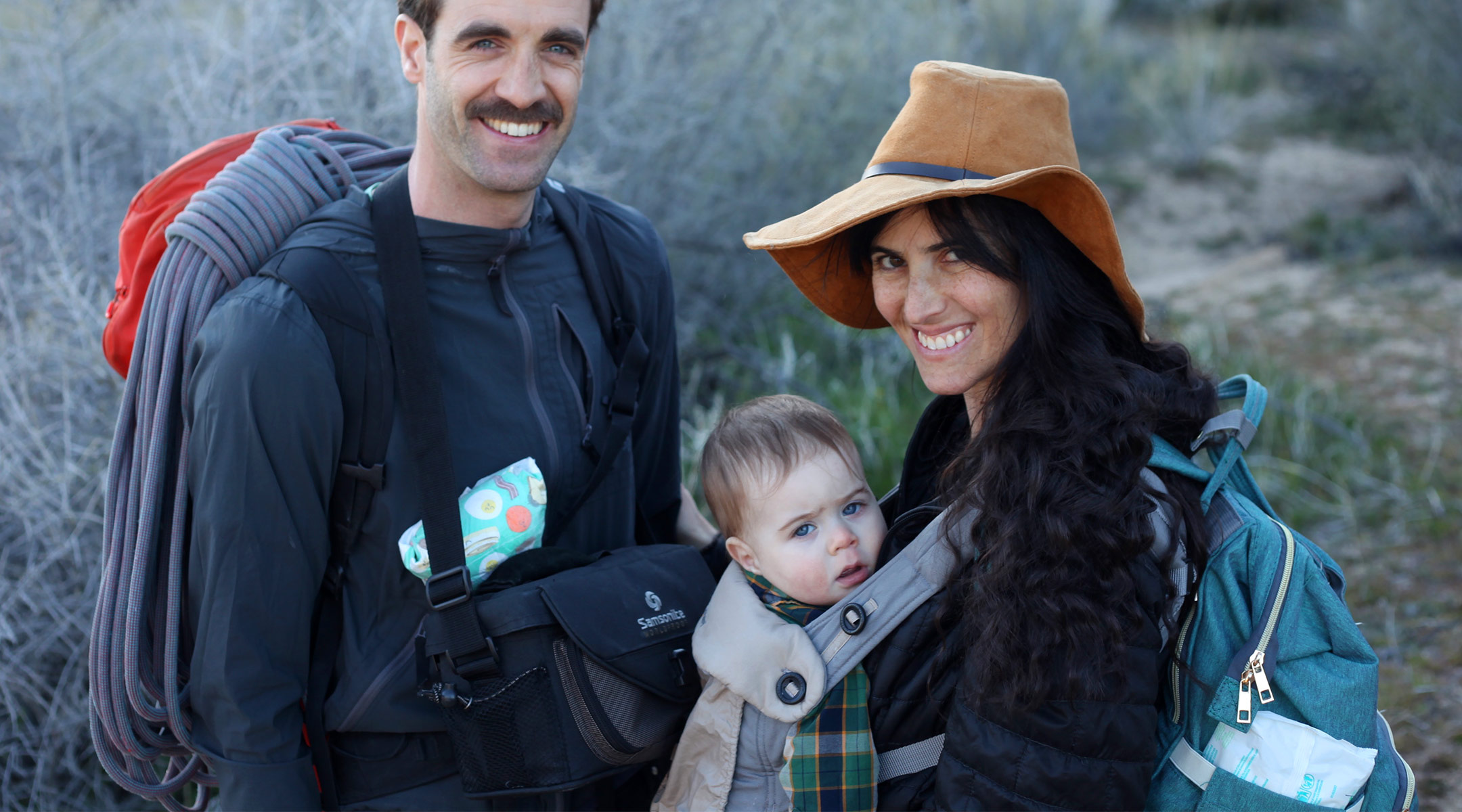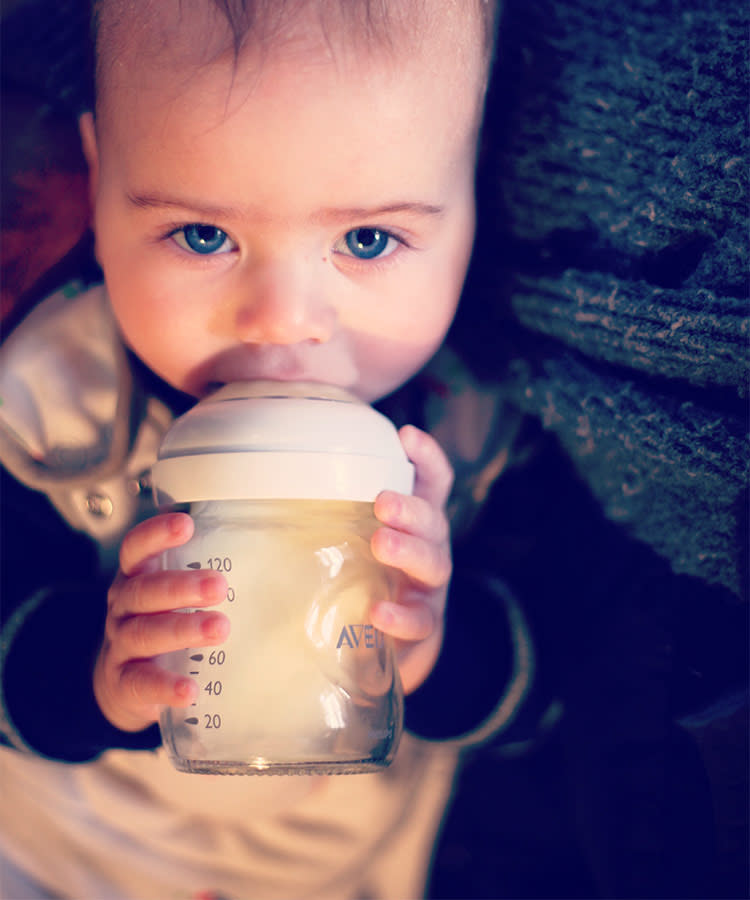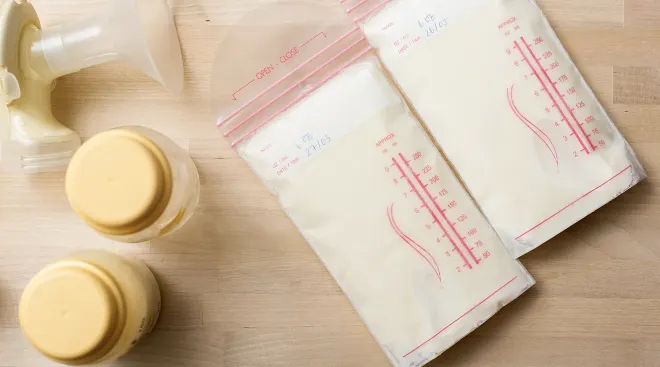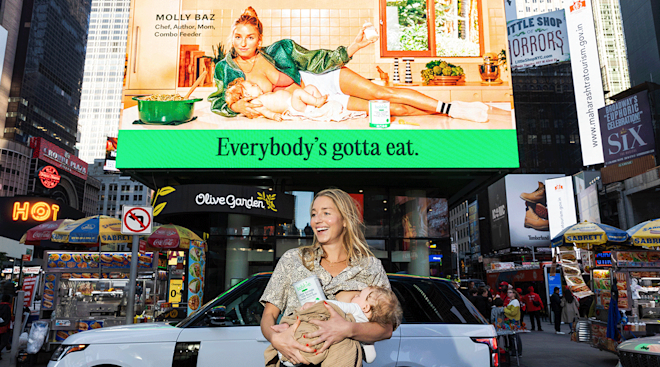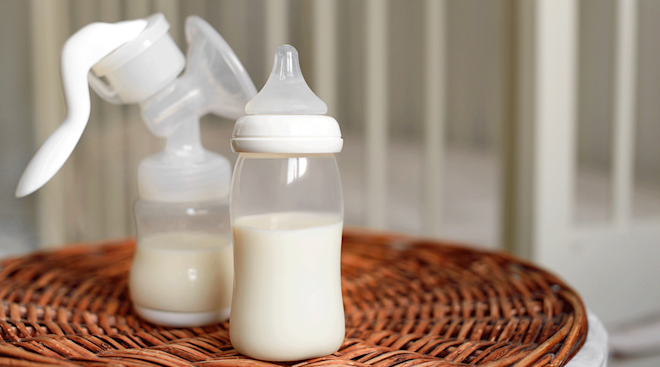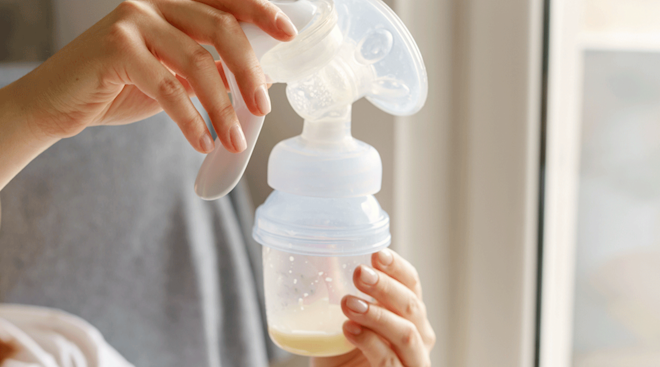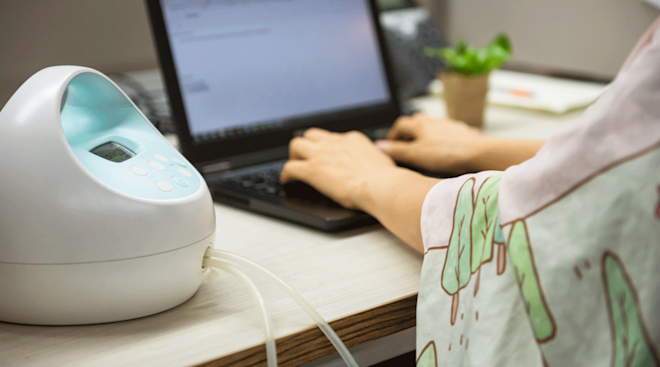How I Survived Triple Feeding and Low Milk Supply
I had an easy pregnancy. I know I’m not supposed to say that out loud, just like I’m not supposed to tell you my baby is a great sleeper. But he is (usually), and I did. I did not, however, have an easy—or traditionally successful—breastfeeding experience.
I didn’t take a breastfeeding class before giving birth. I just assumed I’d be able to nurse my baby, as my mother did me. And as a long-time vegan, the idea of giving my baby anything other than my own breast milk wasn’t really something I had considered. I vaguely recalled some friends saying they had a hard time breastfeeding, but I assumed they meant their nipples were cracked and sore, or that their baby wouldn’t latch. So when I was informed about a week after my baby was born that he wasn’t getting enough milk from breastfeeding and was losing weight, I went through various emotions: disbelief (his birth weight was overstated because of fluid!), anger (these lactation consultants just need to back off and let me keep nursing, and eventually my milk will come in!) and then sadness (what’s wrong with me? What’s wrong with my baby?).
When the lactation consultant had me do the first of many weighted feeds—where we weighed my baby, then I nursed him, then we weighed him again—I thought it must be a mistake that the scale showed he had ingested 0 milliliters of milk after nursing for 20 minutes. Maybe he just had a really fast metabolism! Or the scale was wrong! After we gave him 15mL of pumped milk with a syringe, I made her weigh him again. The scale showed he had gained 15mL.
They weren’t sure why he wasn’t transferring milk from me. Maybe it was him (a poor suck, or tongue tie?) and maybe it was me (low milk supply?). It was likely a bit of both. And when it comes to low milk supply, there’s often no clear cause. It could be diet, but my diet was well-balanced (and there’s no data showing vegans have more supply issues than the general population); it could be hormonal, but the blood work I requested came back normal. Regardless of the reason, I was told I had to figure out a way to (1) feed my baby, and (2) attempt to “get my supply up.”
So I began the journey that many moms know: triple feeding, which means nursing the baby, then pumping, then giving the baby a bottle of that pumped breast milk. For the first five months of my baby’s life, this was the cycle almost every time he ate. Nurse. Pump. Bottle-feed. I was only able to pump enough for about half of his bottles; for the other half, I used formula or donor breast milk.
As you might imagine, this process took up a huge part of my day. It was only even remotely feasible for me because I had a long maternity leave and a supportive and involved husband. It’s not fun. It’s a TON of work. And it can get you down. Although triple feeding isn’t supposed to be a long-term solution, I kept it up for five months because I felt it provided me with the best (ha) of both worlds: I was still able to nurse my baby, which comforted him and helped us bond, and through pumping, he was getting as much of my breast milk as possible, even if that amount was small in comparison to those with a robust supply.
Many of my friends couldn’t understand why I didn’t give up. “You get so little when you’re pumping, why bother?” “Just nurse him and give him all formula in his bottles!” These statements made sense. But I wasn’t ready to give up. I kept thinking that at some point his nursing would improve, or my supply would improve, and we’d just be able to nurse as I had imagined. That never fully happened. But throughout the course of our journey, I learned some things that made it easier. And we did settle into a routine that worked for both of us.
First, I realized quickly that I needed a portable breast pump. When I originally ordered my pump, I assumed I’d use it to pump at work, and maybe occasionally at night or if I was out of town away from my baby. I certainly didn’t think that I’d be pumping eight to 10 times a day, every day, from the first week my baby was born. Once I got a portable pump, I wasn’t forced to sit in the same chair for hours a day. Not only could I move around the house, but I could move around in the world as well.
Although pumping on a schedule every few hours is initially super-daunting, once I got comfortable doing it on the go and in public, I felt more like myself and was able to get back to my (new) normal life. I got a few great pumping shirts—with a separate opening on each side— that allowed me full coverage while pumping, and also occasionally used a nursing cover as a pumping cover so no one could see what was going on. I have pumped at the beach, at the base of a rock climb, on airplanes and while hiking in the woods. Once, I even pumped at the coffee shop while talking to my congressional representative (she didn’t seem fazed).
I also realized early on that lactation consultants have good general information, but I had to figure out what worked for me. I was told by multiple lactation consultants to pump for 15 minutes after I had nursed the baby, or “until empty.” When I first started pumping, I didn’t know what “until empty” meant, as there was always a small drip of milk present, so I stuck to the time limit. I have since learned that if I pump for 30 minutes, I get more than twice as much milk. I’m able to get additional letdowns if I pump longer (and switch to letdown mode about half way through my pumping session). I also have to squeeze pretty hard while I’m pumping to get my milk to come out. These are all things that took me months to figure out.
I religiously tracked the precise number of milliliters I pumped for the first six months of my baby’s life, first by hand, then with an app. If I had a low day, I got sad. If I missed a pump, I felt guilty. I eventually realized that none of this was good for my mental wellbeing, and decided it didn’t actually matter how much I was pumping. I filled the bottles I could with my milk, and made formula for the ones I couldn’t. My quality of life and happiness improved tremendously once I stopped tracking my milk production, and I wish I had done it sooner.
I would be remiss if I didn’t also mention supplements. When you have low milk supply, everyone on the internet is going to tell you about supplements! (They’ll also tell you to eat oatmeal and drink Gatorade. I tried those things, but they didn’t help my low supply become a full supply.) I bought all the herbs: fenugreek, goats rue, black seed oil. I tried everything, from the common to the obscure. And you know what? None of it made any difference for me. While some of the women in my online low milk supply groups moved on to the pharmaceuticals Domperidone and Reglan when herbal supplements didn’t work, I decided not to go that route. I’m a bit of a hippie and try not to take medication unless I really need it. I determined that while others had some success with them, these anti-nausea / heartburn medications that have the side effect of inducing lactation weren’t for me.
And then comes formula. I had no idea this was such a loaded subject before I had my baby and encountered supply problems. I also had no idea it would evoke such an emotional response in me. Formula just wasn’t something I had planned on, and though I wasn’t sure that I was going to raise my baby vegan, I wanted to at least extend that decision. But that wasn’t a luxury I had. When I saw him dropping off his growth curve, I needed him to eat more than I needed to stick to my own ethical restrictions.
We used donor milk for a while to supplement my pumped milk, but eventually we needed more than we were able to get, so we started using formula. And at some point I realized this: Some breast milk is better than none. I’m not sure why this wasn’t intuitive, but it took me a while to understand that not being able to exclusively breastfeed didn’t mean I had to give up. And when pumping multiple times a day became too much for me a few months in, I realized this: Not being able to pump eight to 10 times a day didn’t mean I couldn’t still pump four times a day and get some (though maybe not quite as much) milk.
Through attending breastfeeding support groups, I also realized that many people “combo” feed. This was also news to me, knowing nothing about the topic before becoming a mother. I’ve met many moms who were perfectly able to exclusively breastfeed their babies while they were home with them or on the weekends, but were unable to pump enough to fill the bottles their babies needed while at daycare. Whether this is because the mom didn’t respond well to the pump or because she wasn’t able to find enough time to pump, it doesn’t matter. At some point, many breastfed babies get a bottle of formula. This is especially true once the baby is eating solids, when formula is just another form of food. Knowing this made me feel less alone.
In the end, I arrived at my most important realization: I’m unable to tell what impact nursing, pumping and formula have had on my baby. I strongly believe that the gut microbiome is important, and there is undoubtedly much more to it than we currently know. I also believe that the dairy industry is pretty terrible and that cows and goats used for their milk don’t live their best lives (often, far from it), so it was very hard for me to come to terms with giving my baby formula (for a variety of reasons, I wasn’t interested in using soy formula). That said, my baby is happy and growing. He’s now in the 42nd percentile for weight (up from a low of the 12th). He eats a variety of foods (including dirt off the floor—sigh). Bottom line: I have no way of knowing if or how he would be different, or whether his life would be different, if I had been able to exclusively breastfeed him. There are so many factors that impact our health and our happiness. How my baby is fed is one of those factors that I’ll never be able to untangle from everything else that makes him who he is.
My son is now 13 months old, and our nursing relationship is still evolving. He had a tongue tie revision when he was 2 months and finally figured out how to nurse well at 6 months, though at that point my supply was what it was. At around 8 months, I became able to exclusively nurse him in the morning; that was the only time of day he didn’t need a supplemental bottle after nursing. I stopped pumping completely when he turned one, and I now nurse him every morning when we wake up and every night before bed. He gets some milk, I’m sure, but I’m no longer focused on how much milk he’s getting. “Ahh,” I think, “this is what it would feel like to have a more typical nursing relationship with my baby.” He’s growing, he’s happy, and he’s never had an ear infection. But he still eats dirt and has no idea how to use a spoon. Babies, right?
Sarah Schindler is the associate dean for research and the Edward S. Godfrey professor of law at the University of Maine School of Law in Portland. She writes and teaches about property, land use and local government law. Sarah spends her free time hiking, climbing and exploring the outdoors with her husband, baby and dog. She documents some of their adventures on Instagram at @sbschindler.
Please note: The Bump and the materials and information it contains are not intended to, and do not constitute, medical or other health advice or diagnosis and should not be used as such. You should always consult with a qualified physician or health professional about your specific circumstances.
Navigate forward to interact with the calendar and select a date. Press the question mark key to get the keyboard shortcuts for changing dates.
































